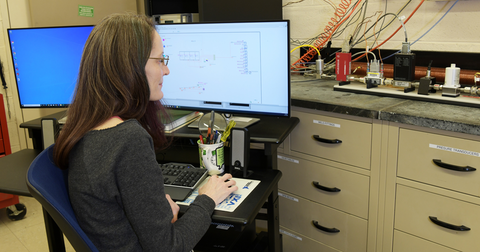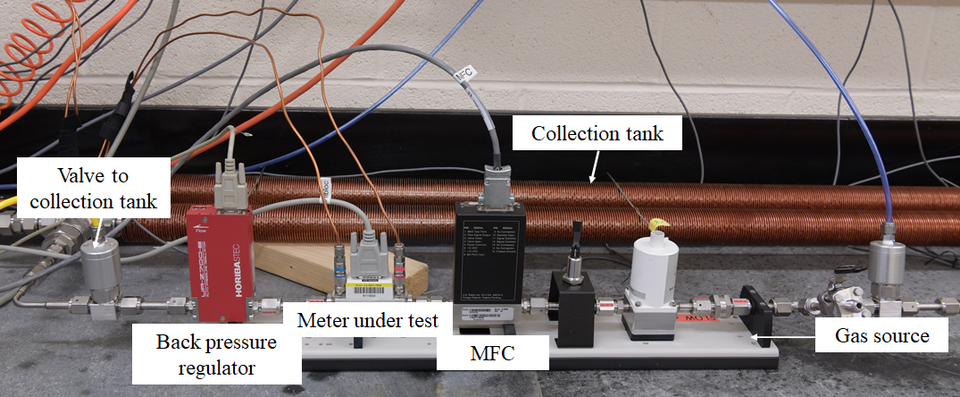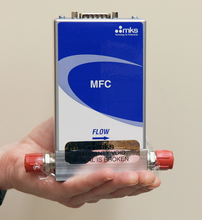Reliable Flow for Chip Makers
New NIST project aims to meet the need of semiconductor manufacturers for increasingly accurate control of gases.
Researchers at the National Institute of Standards and Technology (NIST) have begun an ambitious project to attack a vexing problem in the semiconductor industry: rigorous flow control of the many gases used in making semiconductor microchips.

“Flowmeter manufacturers need specified uncertainties – precisely measured levels of confidence – and dependably reproducible performance to manage all the gases they use,” said Jodie Pope of NIST’s Fluid Metrology Group. “And right now, in many cases, that requirement can’t be met – especially for some of the new and often hazardous gases recently introduced into the fabrication process.”
Making a typical microprocessor for a modern personal computer takes several weeks and hundreds of process steps inside sealed chambers. During that time, different gases are applied to or deposited on the chip over a wide range of temperature and pressure conditions to create the chemical compositions and etch the physical features that result in more than a billion transistors on a surface the size of a fingernail.

As chip components have grown smaller, so has the need for ultra-low gas flows – as little as one-tenth of a cubic centimeter per minute for some operations – that can be exactly controlled and do not vary more than a fraction of 1 percent from one production run to another.
Meeting those demands will require unprecedented advances in the ability to calibrate devices called mass flow controllers (MFCs), tens of thousands of which are utilized in semiconductor manufacturing to regulate movement of gases in production chambers. Maximizing confidence in their performance is the goal of the new NIST program.

MFCs are usually calibrated using nitrogen, which is extremely well characterized and largely inert. How they handle other gases is generally determined by using a look-up table of correction factors that is different for each gas and each MFC design.
“Chip manufacturers may start from those numbers,” said NIST fluid scientist Keith Gillis, “but when they run the process they frequently have to tweak all of their flows and mixtures in order to get the product that they want. So it becomes a recipe that they have to figure out and follow by trial and error. That’s expensive. The outcome of our new program would be that they would have a more accurate method of determining how the parameters should be set.”
“Moreover, many of both the conventional and newly introduced gases are very toxic,” said Pope. “Some are corrosive and even explosive. Many are poorly characterized in terms of viscosity, density, thermal conductivity, and other properties that affect flow. And often we don’t have a lot of that information in existing databases. So we have to measure those gases ourselves to determine what the best conversion factors are.”
The group has begun assembling new test apparatus and safety enclosures that will eventually be able to accommodate up to 16 liters of various gases at as much as 1 liter per minute. So far, the new project has attracted about 20 stakeholders from industry. To keep them up to date on findings as the research progresses, scientists are posting the latest results at Research Updates – Gas Flow for Semiconductor Manufacturing.
NOTE: Certain commercial products or company names are identified here to describe our study adequately. Such identification is not intended to imply recommendation or endorsement by the National Institute of Standards and Technology, nor is it intended to imply that the products or names identified are necessarily the best available for the purpose.

